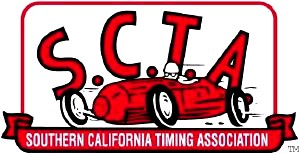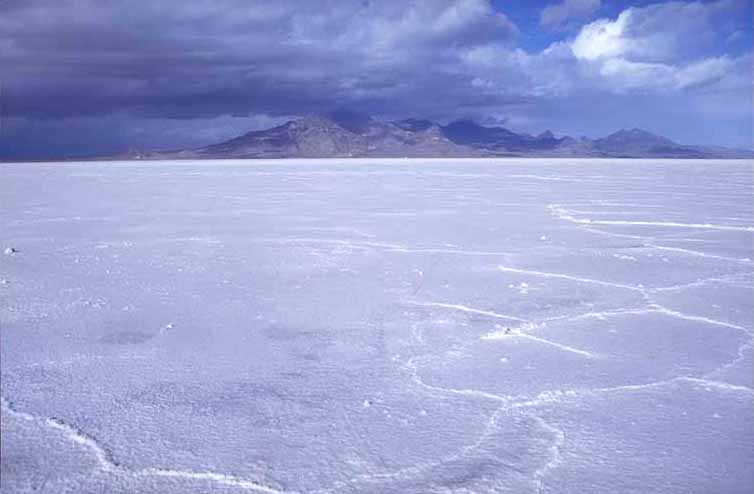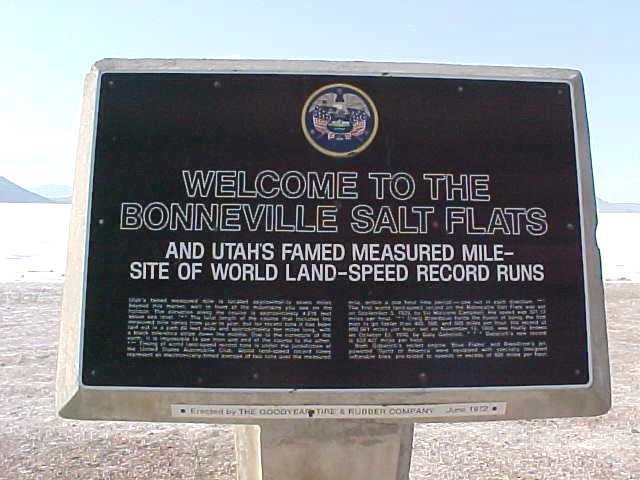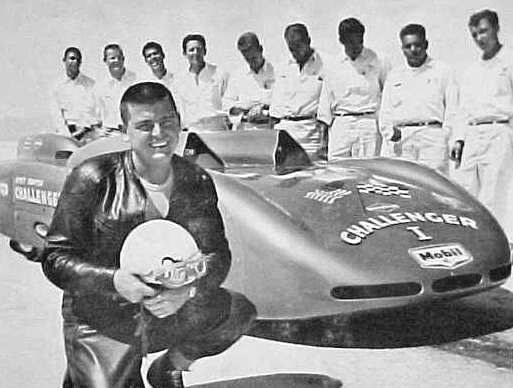|
BONNEVILLE CARS & DRIVERS
|
||||||||||||||||||||||||||||||||||||||||||||
|
LAND SPEED RECORD CARS
Art
Arfons' Cyclops Streamliner The
Bean Bandits Racing Team Streamliner
Rick Byrnes Malcolm
Campbell Jack
Chisenhall and the "Cool 200" '53 Studebaker The
Danny Boy Streamliner Dempsey's
World Record Associates' White Lightning Electric Streamliner
245 mph on batteries The
Dreamliner III Streamliner Chauvin
Emmons' Fuel Modified Roadster Darrell
Ferguson and the Black Radon Engineering Blown Fuel Altered '68 Firebird
259 mph Andy
Green and the ThrustSSC Streamliner
The Hoffman / Markley Streamliner The
Hot Rod Lincoln Kugel
Komponents the first stock-bodied
production car over 300 mph Ron
Main's Flatfire Flathead-powered Streamliner
295 mph Mallo
Racing's 1928 Ford roadster Dave
Mann's Reprosteel 1932 Ford A/Gas roadster McBride
& Moreau Racing's One-Liter Streamliner
224 mph Rosco
McGlashan and the Aussie Invader III Streamliner Russ
Meeks and the Finishline Coatings Modified Roadster Ky
Michaelson The Rocketman The
Nish Motorsports Streamliner 345 mph with
a small block Chevy Richard
Noble and the ThrustSSC
The North of 49 Bonneville Racing Team Street Roadster The
Phoenix Unlimited Diesel Truck 221 mph The
Racing Beat Mazda RX-7 The
SO-CAL Speed Shop Belly Tanks and Streamliner Waldo
Stakes and the Sonic Wind Rocket Sled Strasburg
Racing Summers
Brothers Al
Teague 432 mph Blown Fuel Streamliner Danny
Thompson and Mickey Thompson The
Tom Thumb Special II D/Fuel Competition Coupe
227 mph Don
Vesco and the Team Vesco Racing Turbinator Streamliner
458 mph with a turbine Ken
Warby The
Y Be Normal Turbocharged 1989 Pontiac Trans Am Rick
Yacoucci and Jack Costella's Nebulous Theorem II Streamliner
MOTORCYCLE LSR RACERS
Ron
Cook Corbin
Harley-Davidsons Don't
Be Scared Racing Kawasaki Jim
Feuling and the Feuling Advanced Technologies motorcycle streamliner
332 mph Mark
Fillebrown Denis
Manning and the Bub Enterprises 3,000cc Motorcycle Streamliner Carl
Morrow and the Carl's Speed Shop Harley-Davidson Joe
Petrali 136 mph on a Harley Knucklehead at
Daytona Beach in 1937 RB
Racing Harley-Davidsons S&S
Cycle 239-mph Harley-Davidson Sportster
List Racing Team Team
Cooked Goose Moto Guzzi Team
Elves racing a Buell at Bonneville Team
SNART Racing racing a Sportster at Maxton
Jon & Nancy Wennerberg 247cc and 1,270cc Kawasakis Sam
Wheeler's Ez-Hook Streamliner 1350cc Fuel
Streamliner
LAND SPEED RECORD PARTS
Many
Bonneville cars have been built with parts designed for drag
racing, so have a look in the Speed
Equipment Directory for chassis
parts, engines
and transmission
parts, and safety
equipment.
Wheels
and tires
are among the most specialized parts that are used in this type of
racing.
Although
several companies have provided Bonneville racers with tires in the
past, Mickey Thompson Tires is presently the only source for tires rated
over 375 miles per hour. Here's what they have available:
These tires are available from the factory and from their West Coast distribution center.
Two of the companies that specialize in building custom wheels for these tires are run by Ken Huff and the Taylor brothers.
Race car fabricators that specialize in Bonneville racing are not very common, but a look in the pages of some of the magazines provided ads for several of the companies that are run by successful Bonneville racers. I'll be expanding this section whenever I find something to add, so keep checking back.
Barkdoll
Racing aerodynamic consultant and hand-laid fiberglass California
Chassis Engineering race car fabrication
and aluminum bodies by Dave Tuttle Deist
Safety safety equipment for land speed
record racing Hoffman
Metal Products custom metal fabrication Krem
Engineering mechanical engineering, race
car design and problem solving Strasburg
Racing "Specializing in speeds over
200 mph" Stroud
Safety safety equipment for land speed
record racing Summers
Brothers, Inc. streamliner axles, chassis
and bodies
LSR SANCTIONING AUTHORITY
SCTA
Southern California Timing Association, Inc. USFRA
Utah Salt Flats Racing Association Races
at Lake Gairdner are sanctioned by the Dry Lakes Racing Association
in Australia. World
land speed record runs are officiated by the FIA Federation
International de L'Automobile. For information on how you can help support the Save The Salt campaign, contact Rick Vesco at (801) 723-7737.
LSR WEBSITES
Bluebird Electric Bonneville
200 MPH Club Bonneville
Racing News Bonneville
Speed Week Dave Mann visits the salt Breaking
the Sound Barrier Andy Green and the
ThrustSSC team Ugo
Fadini Land Speed Record Models In
addition to being a master model builder, Ugo's site provides articles
about the historically significant race cars he builds models of. The
Speed Record Club publishers of Fast FACTS The
Speed Record Shop LSR and WSR souveniers
from the U.K. Thrust
Powered Race Cars
The Bonneville Salt Flats are a 121 km² (47 mi²) salt flat in northwestern Utah. A remnant of the ancient Lake Bonneville of glacial times, the Salt Flats are now public lands managed by the Bureau of Land Management.
The Salt Flats are perhaps most famous for their use as the Bonneville Speedway for high-speed race cars which have achieved speeds in excess of 600 miles per hour (1000 kilometers per hour). Several movies have been filmed at the salt flats, including portions of Independence Day, The Brown Bunny and The World's Fastest Indian.
Each rainfall erases tiremarks and flattens the densely-packed saltpan that is inhospitable to plantlife.
In 2006 the Stardust landed safely on the salt flats; however, in 2004 the Genesis crashed into it, damaging the spacecraft after a failed parachute deployment. Los Alamos National Laboratory stated that they should be able to meet many, if not all, of their primary science goals.
The Bonneville Salt Flats as seen from a rest area along Interstate 80
One of the areas in the MMORPG World Of Warcraft is a possible homage to the flats. The area called "The Shimmering Flats" is located within the zone "Thousand Needles." It is a large salt flat in which the game's two engineer races, the goblins and gnomes, test and race rocket powered vehicles.
WHAT IS A SALT FLAT?
An alkali flat, also known as playa or sabkha, is a dry lakebed, generally the shore of, or remnant of, an endorheic lake. Such flats consist of fine-grained sediments infused with alkali salts. Their surface is generally very dry, hard and smooth in the summer months, but wet and very soft in the winter months. While the playa itself will be devoid of vegetation, they are commonly ringed by shadscale, saltbrush and other salt-tolerant plants that provide critical winter fodder for livestock and other herbivores.
Many playas contain shallow lakes in the winter, especially during wet years. If the layer of water is thin and is moved around the playa by the wind, an exceedingly hard and smooth surface can develop. Thicker layers of water can result in a "cracked-mud" surface. Too little water can result in dune formation.
The extremely flat, smooth, and hard surfaces of playas make them ideal surfaces for driving motor vehicles on. Large-sized playas are further excellent spots for pursuing land speed records, as the smoothness of the surface allows low-clearance vehicles to travel very fast without risk of disruption by surface irregularities, and the course of travel does not need to be too precise to avoid obstacles. The playas at Bonneville Salt Flats in Utah and Black Rock Desert in Nevada have both been used for setting land speed records. The latter is also the site of the annual Burning Man art and music festival.
Salar de Uyuni in Bolivia, near Potosν, is the largest salt flat in the world (12,000 km², about 300 times bigger than the Bonneville Salt Flats).
Terminology
The Spanish word playa (/ˈplaʝa/) literally means "beach". Alkali flats are known by this name in some parts of Mexico and the western United States (pronounced /ˈplaɪə/). On the Llano Estacado and other parts of the Southern High Plains, playa refers to a playa lake, a smaller seasonal depression.
In Arabic, an alkali flat is called a sabkha (also spelled sabkhah, sometimes sebkha) or shott.
The Bonneville Salt Flats - Welcome Sign
LAKE BONNEVILLE
Lake Bonneville was a prehistoric pluvial lake that covered much of North America's Great Basin region. Most of the territory it covered was in present-day Utah, though parts of the lake extended into present-day Idaho and Nevada. Formed about 32,000 years ago, it existed until about 16,800 years ago, when most of the contents of the lake were released through the Red Rock Pass in Idaho. Many of the unique geological characteristics of the Great Basin are due to the effects of the lake.
The Great Salt Lake is a remnant of the original Lake Bonneville. Several levels of the old shorelines are still visible above Salt Lake City, along the Wasatch Front and elsewhere. Its appearance is that of a shelf or bench protruding from the mountainside, well above the valley floor. Four main shorelines are associated with the fluctuating levels of the ancient lake. The Stansbury, Bonneville, Provo and Gilbert shorelines each mark a time when lake level remained constant long enough to deposit massive accumulations of sand and gravel.
The Bonneville Bench, at approximately 1,555 m (~5,100 ft.) elevation, is part of the preserved ice age shoreline. This shoreline marks the highest level attained by the Pleistocene lake approximately 15,500 years ago. During this period, the lake covered over 52,000 km² (20,000 square miles ) and was over 300 m (1000 ft.) deep in places.
About 14,500 years ago, the lake level fell catastrophically as Lake Bonneville overflowed near Red Rock Pass, Idaho. The lake level fell some 105 m (~350 ft.) to what is now the next lower bench (the "Provo level") in a flood that geologists estimate to have lasted up to a year. The Provo level is the most easily recognized shoreline feature throughout the valley and is distinguished by thick accumulations of tufa that formed nearshore during the 500 years that the lake was at this level.
About 14,000 years ago, the lake started to drop again due to changing climate conditions, and by 12,000 years ago, the lake reached a level even lower than that of the modern day Great Salt Lake. A slight transgression or rise in lake level occurred about 10,900 to 10,300 years ago and formed the Gilbert shoreline. The Gilbert shoreline is the least conspicuous of the major shorelines but evidence of it remains at Antelope Island and in large coastal features, such as the Fingerpoint Spit near the Hogup Mountains.
Lake Bonneville is named after Benjamin Louis Eulalie de Bonneville (17961878), a French-born officer in the United States Army, fur trapper, and explorer in the American West. Bonneville is noted for his expeditions to the Oregon Country and the Great Basin.
Mickey Thompson and Challenger at the Bonneville Salt Flats
References
|
||||||||||||||||||||||||||||||||||||||||||||
|
This
website is Copyright © 2013 Bluebird Marine Systems Limited.
The names Bluebird, Solar Navigator,Blueplanet Ecostar BE3,
Utopia Tristar and the blue bird in flight
|
||||||||||||||||||||||||||||||||||||||||||||
|
AUTOMOTIVE | BLUEPLANET BE3 | ELECTRIC CARS | SOLAR CARS | SOLARNAVIGATOR | UTOPIA |



